This dirt parking lot in the San Gabriel Mountains is a magnet for migrating birds
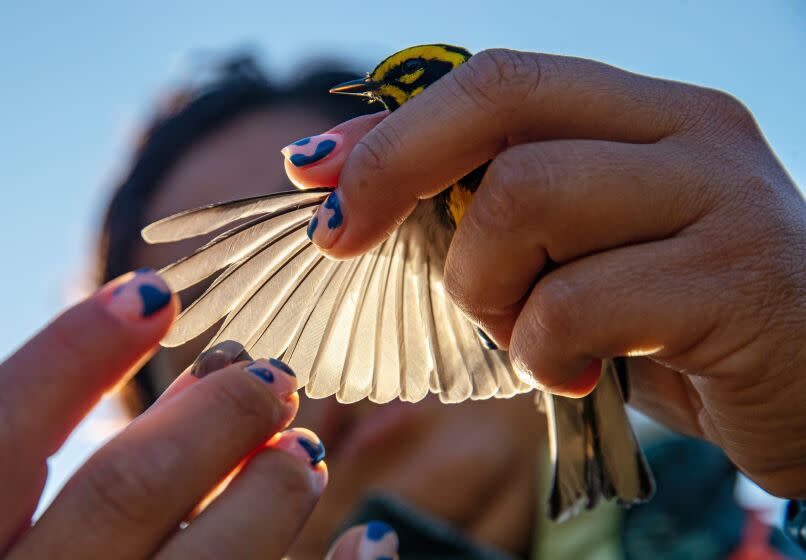
The San Gabriel Mountains loom like an impregnable fortress for millions of migrating birds making their long and perilous journey to distant breeding grounds in the far north.
But scientists recently discovered that many of these spring migrants use a surprisingly unassuming strategy to get over the peaks: They fly extremely low over a dirt parking lot wedged between steep slopes at the western end of the range.
There is no simple answer to the phenomenon in the area known as Bear Divide, which has become a hot spot for avian research projects, about 30 miles north of Los Angeles.
On a recent weekday, a dozen biologists armed with nets, calipers and notebooks gathered before daybreak at the Angeles National Forest site to take a full accounting of one of California’s great wildlife spectacles.
At the first rays of light, the silence was broken by hundreds of colorful birds pouring through one of the only places in the state where migrating birds fly during daylight hours, just a few yards off the ground.
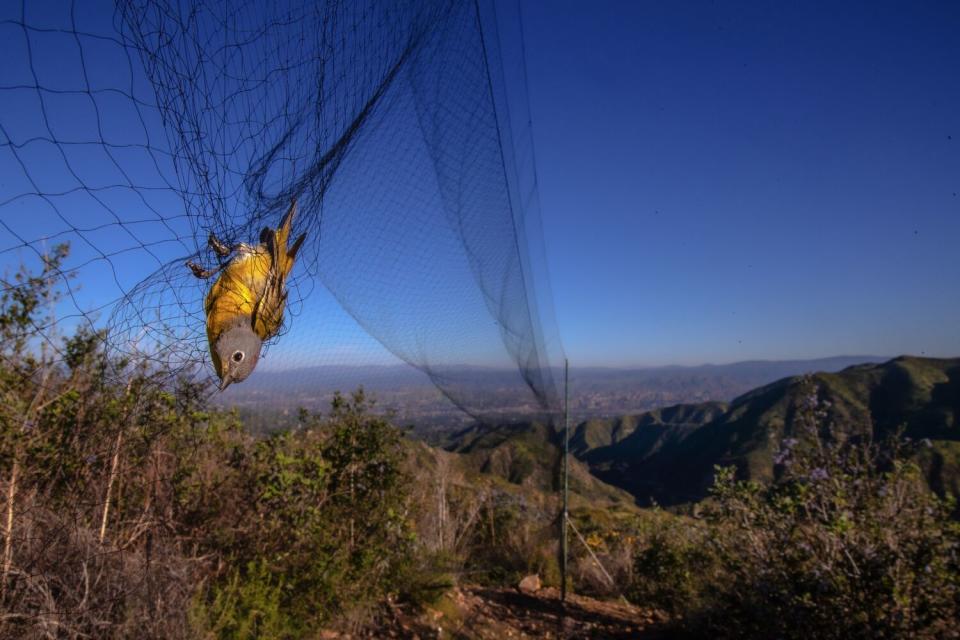
“Here they come,” said Tania Romero, a biology student at Cal State Los Angeles, as a small yellow-and-black bird suddenly stopped in midair, entangled in a mist net.
Moments later, Romero, 30, and her colleagues set to work. They recorded its vitals — a plump and healthy Townsend’s warbler weighing 8.4 grams, about as much as a ballpoint pen — and gently clamped an identification band on one of its legs.
Then she released it back into the morning sky to complete its journey north to breeding grounds in the dense coniferous forests of the Pacific Northwest.
Exactly why the area attracts as many as 13,000 tanagers, orioles, buntings, grosbeaks and warblers on a single day is not entirely understood. But scientists suggest that the topography has a funneling effect on birds during their long-distance migrations along the Pacific Flyway stretching from Central America to the Arctic.

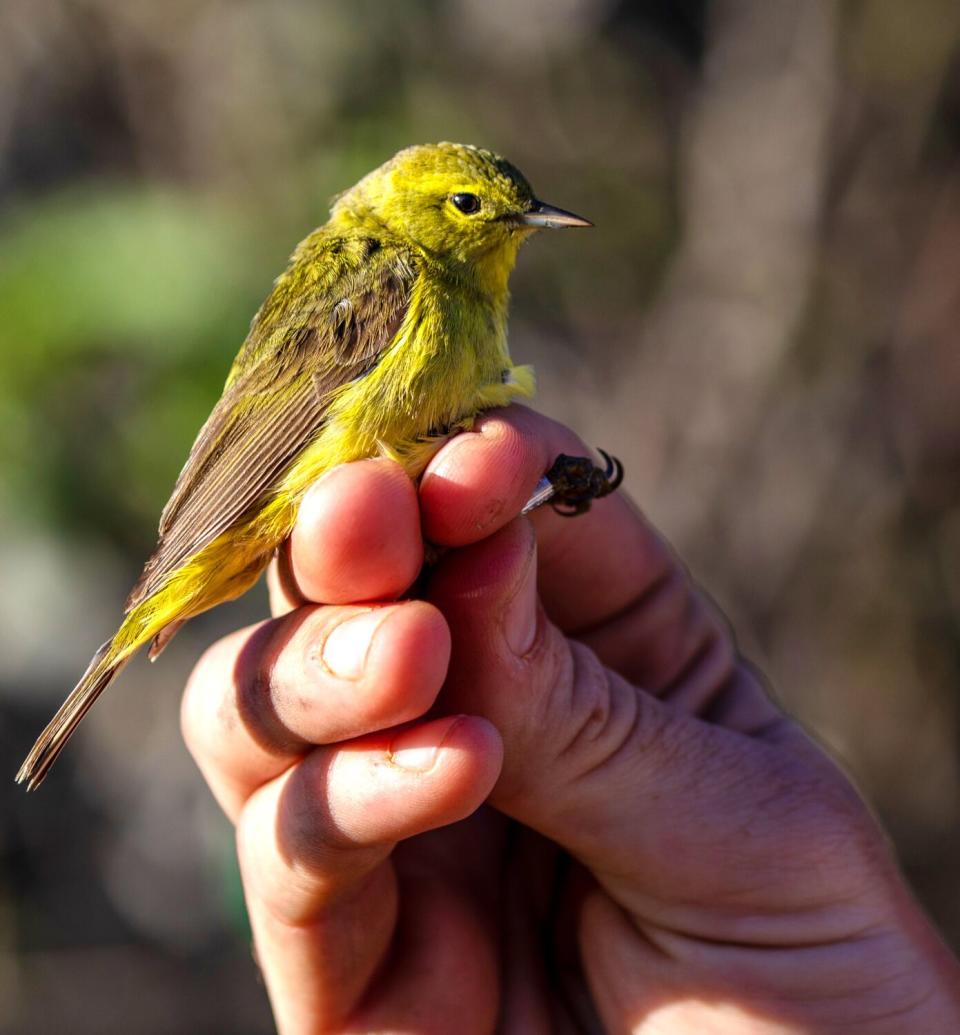
“For birds flying north over the Los Angeles Basin and encountering the San Gabriel Mountains, Bear Divide is like a gate in the castle wall," said Ryan Terrill, a biologist at Cal State Stanislaus who has studied the novel migratory passage since it was discovered in 2016.
But to fully understand the burst of avian life, researchers first need to answer a few burning questions: At what point in their journey do these mixed-species flocks of birds decide to pour through Bear Divide rather than fly over or around the mountains?
And when did this strange evolutionary migration strategy begin?
“There is so much we still don’t know about these birds and their world,” said Lauren Hill, 33, the site's lead bird bander. “For example, no one knows where they were before showing up here after sunrise.”
To help crack that mystery, Romero will soon begin outfitting birds at Bear Divide with tiny transmitters linked to an international network of tracking stations operated by Birds Canada, a nonprofit organization dedicated to avian science and conservation.

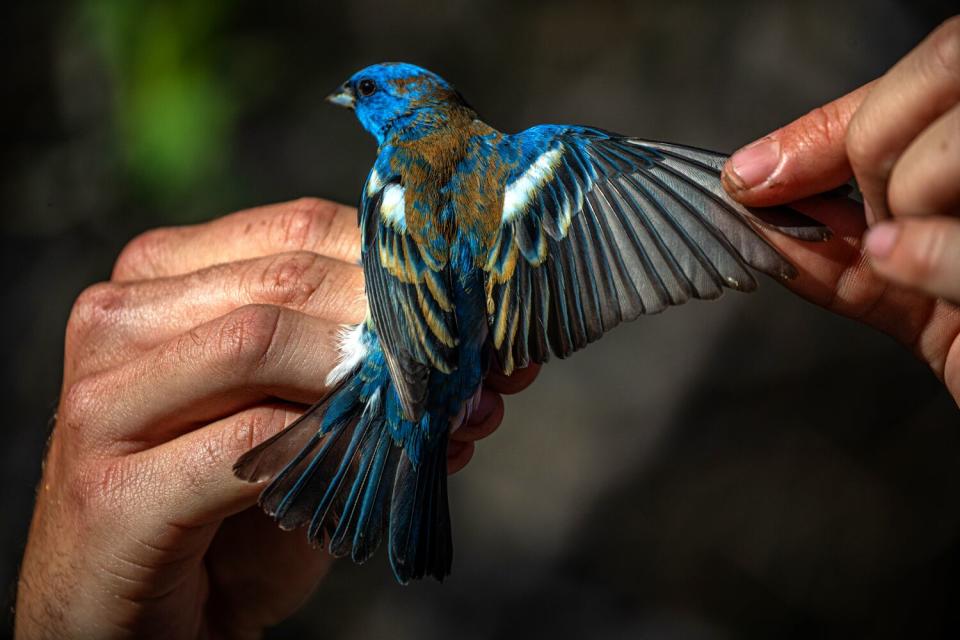
Pasadena Audubon recently partnered with the U.S. Forest Service to fund and install a $10,000 tracking station at Bear Divide. The data it gathers, combined with ongoing research projects, will help scientists better understand complex migratory behavior and upgrade conservation strategies at a time when climate change is upsetting the delicate balance between life-and-death conditions in ancient habitats.
"We're excited to see this phenomenon explored by researchers," said Roman Torres, forest supervisor of the roughly 700,000-acre Angeles National Forest. "Bear Divide is an important place in the Pacific Flyway."
Migrating birds typically fly at night, although morning flights are not uncommon in the eastern United States. But scientists know of only one other location in California where migrating birds fly in daylight hours: Butterbredt Spring in eastern Kern County.
At Butterbredt Spring, however, nocturnal migrants continue flying into the daylight hours. At Bear Divide, scientists say, they appear to stop somewhere and wait for sunrise before whooshing through the passage at about 30 mph.
Because Bear Divide has few trees, counting and identifying these birds can be challenging for even seasoned birders.
But by 8 a.m. on Tuesday, a team led by Kelsey Reckling, 31, had counted 500 birds representing 38 species, including lazuli buntings, chipping sparrows and hermit warblers.
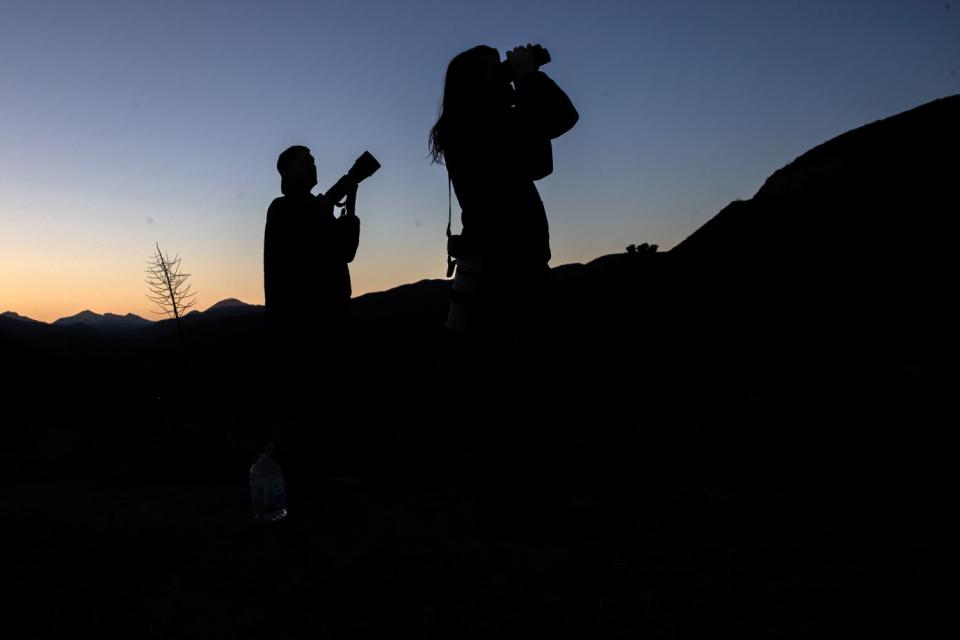
Nearby, the anticipation of scientific discovery was high as others trudged through thick brush and over rocky trails to recover and examine specimens snagged in mist nets stretching more than 1,000 feet across the divide.
“It’s amazing to see something so inspiring and truly wild unfolding in a big dirt parking lot,” Chris Spurgeon, spokesman for Pasadena Audubon, said with a smile. “But Southern California is full of nondescript places that to birders are pure magic.”
This story originally appeared in Los Angeles Times.

